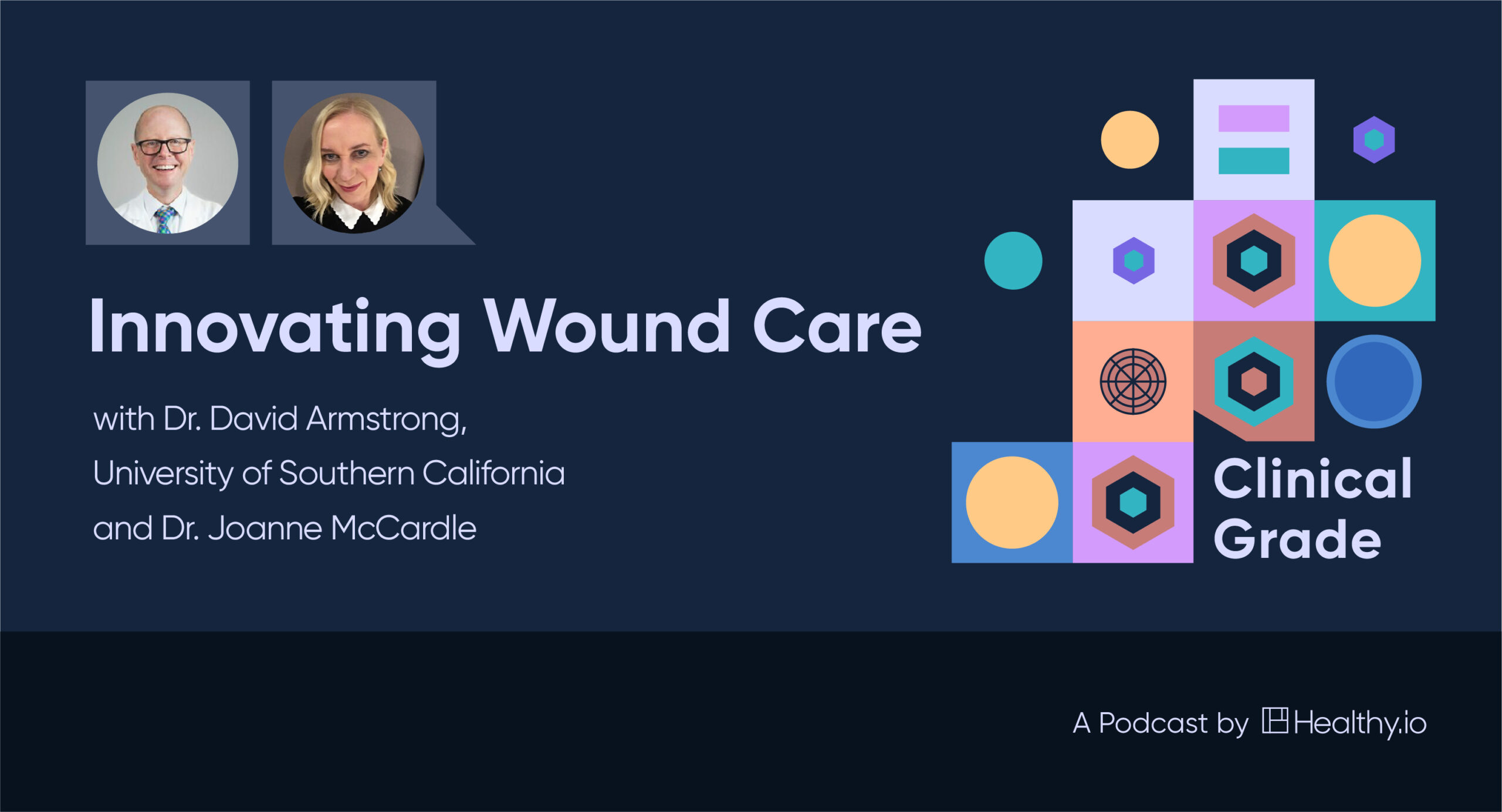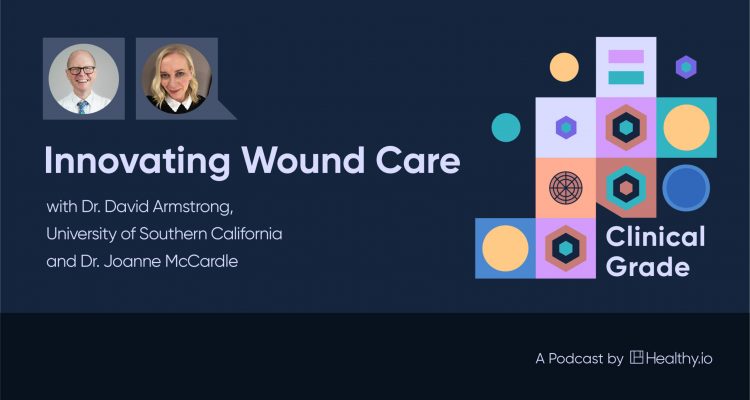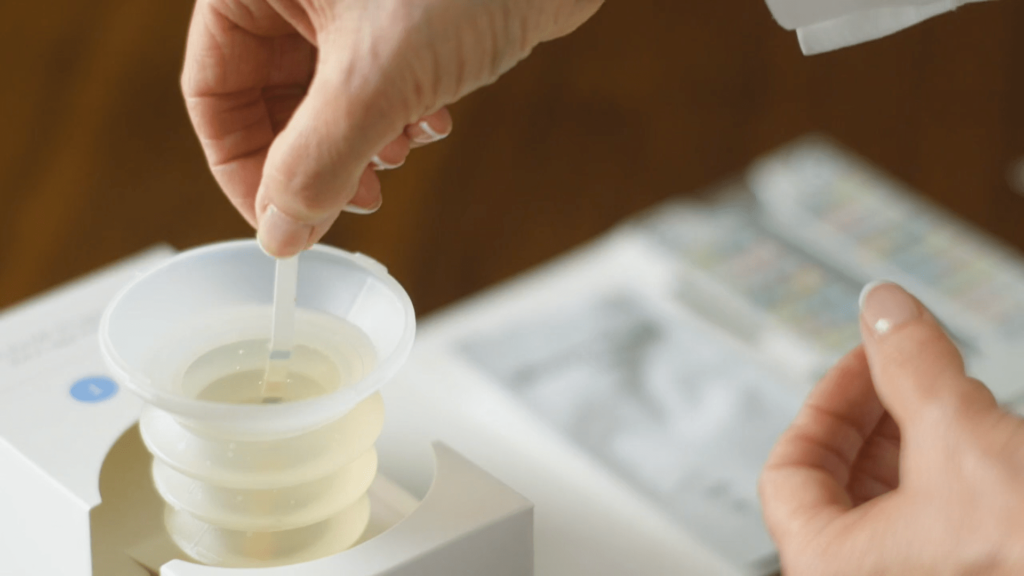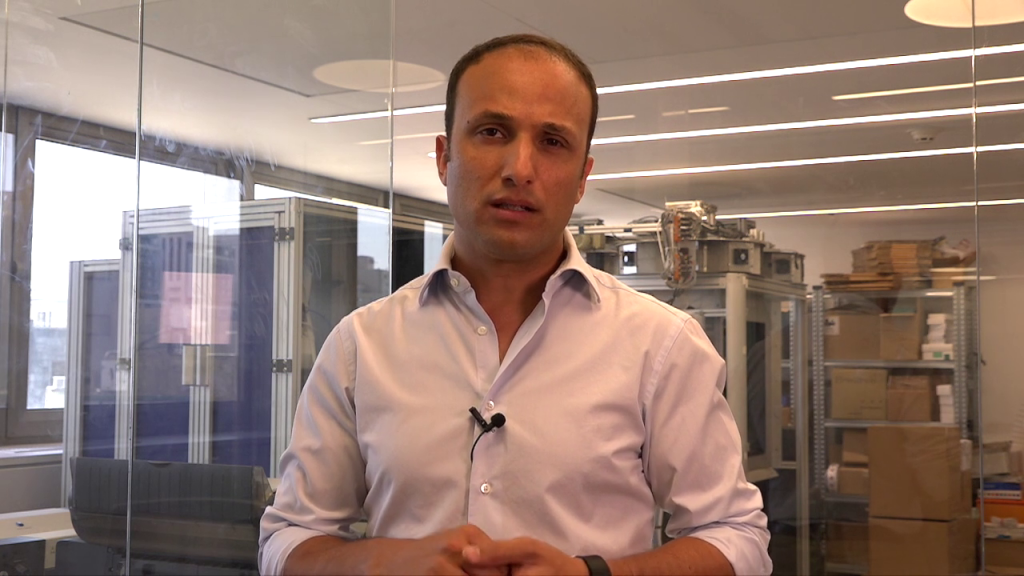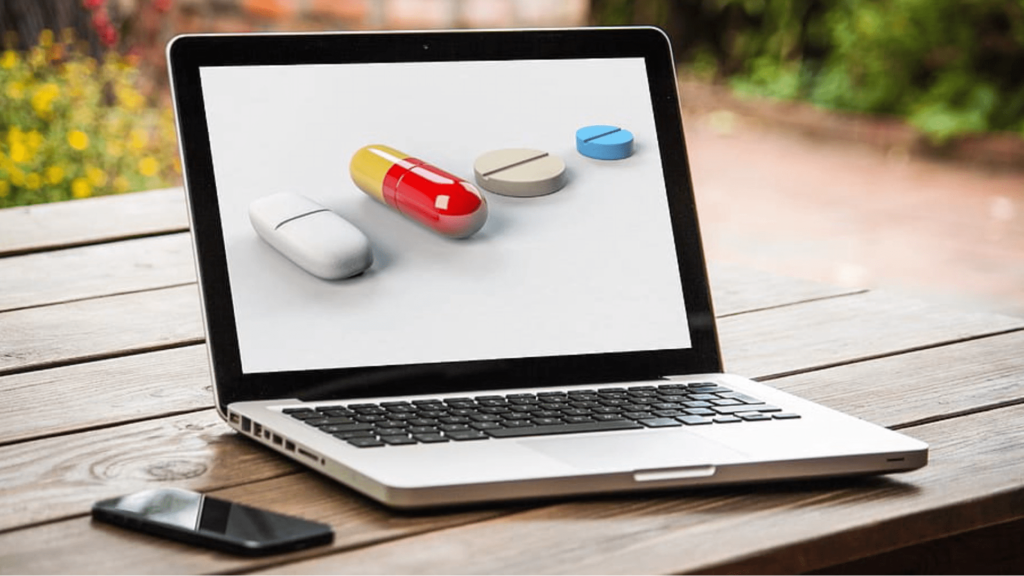Listen now:
Our new episode of Clinical Grade explores chronic wounds and how to treat them. We speak with Dr. David Armstrong, Professor of Surgery at the University of Southern California, the legendary podiatrist and world-renowned expert in wound healing and the diabetic foot. Leading the conversation is Dr. Joanne McCardle, who has a wealth of experience as a podiatrist and digital health expert, both with the NHS and in the private sector.
In this wide-ranging conversation, Dr. Armstrong reveals what first drew him to podiatry, and discusses his groundbreaking work to digitize wound care and how he brings data-driven optimism to what can be a pessimistic practice. And as a bonus, his trademark charm and good humor are on constant display.
You can listen to Clinical Grade using the player above, and subscribe on Apple Podcasts, Spotify, Google Podcasts, or wherever you get your podcasts.
Episode Transcript
Dr. Joanne McCardle Firstly, thank you so much, Professor Armstrong, for arranging to chat with us and give us some of your time. The nicest way to start would be to talk about you and your background in podiatry. So please, David, would you tell us a little bit about your journey to become a pediatric surgeon, and what that means for your family
Dr. David Armstrong Sure. Thanks, Joanne. It’s good to see you, by the way, peri-pandemic or post-, or there’s some sort of variant there, something of that nature. And hello by the way from just outside of clinic here at the National Rehabilitation Center at Rancho Los Amigos. As usual, a beautiful sunny day here in Los Angeles and Southern California, just like I’m sure in Scotland, wherever you are, whether a Glaswegian or in Edinburgh or somewhere in between, Stirling, Aberdeen.
Dr. McCardle I’m in Edinburgh, the nicest bit of Scotland.
Dr. Armstrong And if you were Glaswegian, you would say the exact same thing as well. So we’ll balance it out here in Los Angeles. As you said, I’m a foot doctor. I can think of twogreat gifts from working at the end of this anatomic peninsula, at the end of the body. The first is this. In this era of chest thumping and hubris, I can’t think of anything that’s more of an expression of humility than looking after someone’s feet. It transcends religion, borders, and even time. Tending to someone’s feet is the deepest expression of humility. The other great gift, before we even get into why I got into it, is that in working at the end of the body, you get this wonderful gift of perspective, where you can either just continue to hang out there by yourself on the peninsula, or you can choose to collaborate with the anatomic mainland. We choose the latter. And in doing that, it makes for some crazy clinics. But it also makes for—I mean, it’s worth a life’s work, you know? It’s great. You know I got into this specialty, Joanne, because my father was a foot doctor and I grew up with it in his office, in his clinic. He’s the smartest guy I ever knew. But I saw how hard he worked to try to move the discipline along. And I thought, man, this could be fun, even though it’s this humble little discipline at the end of the body. So anyway, there you are. That’s the prequel.
Dr. McCardle Did you always know that you wanted to be involved with feet?
Dr. Armstrong I worked in my dad’s office periodically. I knew all the nurses in my dad’s clinic. But of course, I loved so many other things as a kid. I played all the woodwinds. So I wanted to be a saxophonist. And I played in a lot of big bands. But finally alighted in university on medicine. And when I did, I thought to myself, what other specialties could I do? And then I looked at my father and how hard he worked to try to advance this humble little specialty. And I thought, man, this would be great to try to pay it forward a little bit. There you are. That’s the backstory there. It’s not the backstory of how I got involved in limb preservation, limb salvage, and podiatric surgery. But it is the backstory of how I ended up wanting to be a toe doctor.
Dr. McCardle You said you wanted to move it forward a little bit and you’ve moved it forward a lot. And we’ll get on your sort of journey towards diabetes foot and wounds, and it segues really nicely into it.
Dr. Armstrong I got interested in people with diabetes and what we now call limb preservation when I was resident in Detroit. I remember it so well now, come to think of it, now that you’re bringing it up there, Joanne. I’ve had a series of epiphanies in my life, but one of them was this. I had just finished my first surgery as a young student doctor. We call it a resident in the United States. I was just an intern. I didn’t know what I knew. I didn’t know what I don’t know. Now, I know what I don’t know even more—and I don’t know a lot more now, if that’s confusing for you! I remember being in the operating room with one of my friends and mentors, Dr Guy Pupp. We were working on this young college athlete and he was this big six foot, nine inch, just a giant Adonis of a guy. And we were just fusing a couple of bones in him. There are the big screws and I finished putting those in his feet. I really felt great because we thought we really helped him. He spent the night to get his cast on and for pain relief and such. And the next day we’re going to see him change the dressing in the clinic before he went off back to living his life. So I was in clinic then, and I was going to help out, as they were breaking down his dressing. So there’s this big six foot nine guy, kind of writhing in pain after his surgery. I popped over to the room next door. Right next door is this little woman. She was maybe four foot nine, or shorter. And the whole room is full because she has all of her family members. She didn’t speak English, she was from India. I saw there’s this little wound on the bottom of her foot. I didn’t know much back then, but I knew that you’re supposed to clean it up and trim it up. And so as I’m talking to her, I’m debriding her wound. She’s literally, just off the airplane from South Asia, from Chennai, as I recall. And her oldest son is like the boss of the family, and he’s translating. And they’re just such a wonderful family, you could tell already, like so many of our patients. She’s just so gentle, quiet. And I’m talking to her andalmost operating on her foot, making it bleed. And she’s telling me all this stuff about how she thinks she developed the wound. She also told me that she had leprosy. I didn’t know much about leprosy, but I knew a little bit about it. And then I looked at her hand and her hand burnt, on the end of her hand, you could see. And there was like a little bit of a wound there. And I thought, what the heck is going on here? And it turns out that she likes to cook and she would reach into the oven to turn the naan bread over in the oven. And she just burned her fingers and she does this regularly. I said, what the heck? And so I step back and I see these two rooms. And in one room is this giant man. Rightfully, he’s in pain postoperatively. He had reconstructive surgery. And then there’s this little lady who has a wound on the bottom of her foot that I just operated on without any anesthesia. She was bleeding a bit and she just burned some of her fingers off because of her leprosy, and because of her diabetes, and this neuropathy. And I said, boy—pain or the absence of pain? What the heck? Because we’re trained as human beings to respond to pain, or to respond to painful stimuli. And we’re trained as clinicians to treat pain, or symptoms. But what about the absence of it? That was it. Trust me, I love to operate, but doing it on people like this who really have no one else to talk to and and they don’t have the feedback that they used to, that is really a challenge. And like I said, I think it’s worth a life’s work.To make a short story long.
Dr. McCardle That’s really interesting. What do you think are the challenges that we’re facing now as clinicians with wounds? And do you think those challenges have changed much over the years or are they the same challenges?
Dr. Armstrong I guess the answer is yes and yes, because the basics haven’t changed. We have to do a good quality job of cleaning these wounds up, protecting them, and allowing people to move through the world and heal. Those aspects haven’t changed. What has changed, though, I think, is the fact that we’re realizing now that we need to measure what we manage a little bit better than we have been. You know, in the past, a lot of this was done entirely as an art, right? Where we wouldn’t really measure things. We would just manage them. And that’s silly. That’s like flying an airplane with just a stick and rudder. And while that was great early on in the day, when everyone was like a Red Baron, as it were, we don’t need to do that anymore. We should be instrument-certified, and we should be relying on many of the companion diagnostics and theranostics that exist now. I think there are a lot of ways to measure what we manage a lot better, with imaging, and with, like with cancer, you have what people called companion diagnostics or theranostics, things that help direct therapy. So I think that may be one of the things that has changed as we move into the future. I’m really happy to see it, because we’ve been working on this stuff since I was a student. So it’s fun to see it. It’s like becoming an overnight success in 20 years.
Dr. McCardle I know that you’ve always been involved in modern techniques of doing different things.
Dr. Armstrong There’s tons of things going on. But just to be simple, the old story is what’s the best camera you have. And it’s the one you have with you. Of course, it seems so natural now that we all take so many great photographs because of computational photography now. But everyone basically has a super fancy like Nikon F1—I don’t even know these new terms—D5 or whatever, in their pocket, with their iOS or their Android device or whatever it is. So the ability to take an image now has been democratized. So what we’ve been doing for a while now, people will send what we call a foot selfie—that’s what we call it. And so we set up this foot selfie program. One of our medical students, Mark Swerdlow, has really taken it upon himself. He set up just a simple app that just collates everything. Every Monday, we go through all of these. We have what we call foot selfie rounds every Monday at seven a.m. I had it this morning with Mark, when I was having my delicious Americano, by the way. We could see like 90 of our patients, and we just go through them rapidly. And we’re identifying problems, maybe a little bit of a callus, that might have some bleeding in the callus, that could be predictive of an ulcer. Or maybe we see someone that actually has a wound. Or maybe we see someone that has a little cellulitis, a little infection or something along those lines. And we go through all these really high risk patients super rapidly. And we’ve toyed with different types of algorithms, AI-based algorithms. I think a lot of the deep learning algorithms will get better and better and better to identify some of these things as well.
Dr. McCardle I’d like to explore wound measurement, how important that is to you. Because to me, all the evidence around says that if you can measure that wound size, if you can show that it’s getting smaller, then you’re on your way. And if it’s staying the same, then you’re not on your way. It’s really that simple in my mind. What do you think about that, David?
Dr. Armstrong I agree. We should be charting a patient’s wound progress, hopefully getting smaller, like we would chart our daughter or son’s trajectory when they were a little kid on the wall. Like a pediatric growth chart in reverse. You can show progress. And I think most patients love that as well. They love to see, what’s my number today, where was I last week? Because that’s something where you can really work together to try to move forward. It’s a starting point. We love doing that, frankly, because I think it’s very, very important. But I think collectively, we still don’t do that very well. Most of us just measure with a ruler. And a ruler can be, even if you’re doing everything right, 30 or 40 percent inaccurate. We’ve published this repeatedly. It’s not that you’re doing it inaccurately. It’s just depending on where you measure, and if the wound changes sizes a certain way or another way with different shapes. It’s a little like looking at a Rorschach test or something, when you look at these wounds, whereas, you want to get the whole thing. So that’s why it lends itself particularly well to what we call planometry, planometric measures, which is either a tracing by you, or by a computer, or by a computer followed by an AI overlay.
Dr. McCardle It just gets that more accurate, doesn’t it? Your rulers, your measurement, even tracing it can be quite subjective, to where you think the wound should go. So you mentioned patients sending you images. When I was doing my doctorate degree, I did a lot of work around recurrence of ulceration. I know that’s something that you’ve published quite a lot in as well. Do you think that there’s a place for that foot selfie for people who have healed?
Dr. Armstrong Oh, yeah. That’s most of our patients. We haven’t really talked about this very much, but look, after we heal a patient, are they really healed? I always think it’s a little bit hubristic to think that we can heal anyone. I think we can do our best to get the skin closed. But at a year, 40 percent of people with diabetes will have a recurrent wound. That’s about two thirds, at three years. Three quarters of patients, give or take, have a recurrence at five years. So recurrence is not only common, it’s likely. And that’s OK. But our goal will be to make that wound as un-unusual and as uncomplicated as possible if and when it recurs. The foot in diabetes is a little bit like cancer. We haven’t really talked about mortality rates, and things of that nature, and cost. But in fact, unfortunately, in a lot of ways, this is a life limiting problem, until we can get at this to help these patients. Then maybe when people are healed, maybe they’re not really healed, maybe they’re in remission. That sounds like just a little turn of phrase. But I assure you, sometimes words matter. And in this case, it really does. First of all, when you bring up the ‘cancer’ word. You tell the patient, Miss Garcia, Mr. Berkowitz, thank God you’re healed, but you know what, when you have this wound, it automatically shortens your life. This is like cancer. And you say ‘cancer’ and you see them stiffen up. And you say, but listen, now that you’re healed and you see them relax a little, because you said ‘healed’. Just like with cancer, and you see them stiffen up a little bit, you’re not really healed because you’re in remission. And then you see them kind of looking at you a little like, oh, OK. And then you see them nodding their head, because you say, it’s almost certain that in your long life with us together, as therapeutic spouses here, it’s almost certain that you’re going to get another wound. But our goal is to make that wound as minor and as insignificant as possible. We want to keep you out of the hospital. We want to keep you active, and we want to keep you without a wound. We want to maximize your ulcer-free days, your hospital-free days, and your activity-rich days. And then you see them kind of looking at you and you’ve lost them a little because you said cancer, but they’re hearing a little of it now. And we’re going to get you in the right shoes, if we need to operate on you, change the way your foot hits the ground. We’re going to get your thermometric camera you can buy at Amazon for twelve bucks. You can use a fancy bathmat if you want to use that to check your skin temperature. We’re going to get you in this foot selfie program. You’re throwing all this stuff at them. And you say, I know that’s a lot of stuff right now, but then you dose it out over the next few visits. And the goal really is to maximize those ulcer-free days, those activity-rich days, those hospital-free days. That’s our sort of holy trinity, as it were, of things to measure, as it were.
Dr. McCardle You’re absolutely right. I totally agree with making sure that they know how to access things. And it’s just great to hear you talk about it, because not everyone realizes that. The motto is saving limbs saving lives, this type of message, isn’t it? Could you just talk about that a little bit more for some that don’t understand, or don’t realize the linkage between having a foot ulcer and potentially losing life?
Dr. Armstrong So it’s not fair to compare one terrible thing to another, but there’s plenty of people listening to the podcast that care about cancer. We all do, right? We’ve all had family members that have succumbed, or have survived, or are living with it, or even personal experiences. But very few people care about diabetes. Even if they have it, a lot of people don’t. And even fewer care about feet. But let’s compare these things. Every second now around the world, someone gets a diabetic foot ulcer. Once they get that diabetic foot ulcer, their life expectancy, or their risk for death that year, immediately increases by two and a half fold, compared to if they didn’t have the wound. That wound by itself increases that risk. That’s number one. There’s about a 30-35% chance that they are going to be dead in five years because they have that wound. So that already is worse, by itself with the wound, than the average of all cancers, if you look at National Cancer Institute statistics. If they get, God forbid, an amputation—a high level amputation—their risk for death at five years is anywhere between 60 and 75 percent, conservatively. And if they have peripheral artery disease, it’s a little less than that, or what we call critical lower or limb threatening ischemia. But you see this, unfortunately, terrible histogram. So the only thing that would be worse than having an amputation for some of these patients would be if they had lung cancer or pancreatic cancer, in terms of their risk for mortality. So this is life-limiting and we have to talk to our patients that way. There are ways to improve care for sure. And if you get people moving, you can dramatically change that. But, we wouldn’t think collectively of withholding therapy on someone with lung cancer, or with pancreatic cancer, God forbid, or with breast cancer. But this nihilism, this pessimism, happens all the time with diabetes. You’re talking to your clinician friend, and he or she says, oh, that lady that you’re treating, what are you bothering with her? She has this wound. She’s just going to get another one. Why don’t you just cut her leg off and be done with it? I mean, we hear this, right? And for some patients, that’s probably the best treatment. But not for most. I think almost all the data support that that’s a vanishingly small number. But that kind of pessimism is what we have to get through. We can’t do it until we lay it all out on the line. and people know about this, that this is life-shortening. But there is hope, because we can extend things like ulcer-free days and hospital-free days. We can extend activity-rich days. Even if you have an amputation, we can get you moving through the world and be super-productive. And this happens all the time. But what matters is that social contract between the clinician and her or his patient, and that has to get solidified. You can’t do that if you’re withholding stuff from them. And you’ve just got to let it all out because this is like your therapeutic spouse. This is like your nuptials, as it were. So there you are.
Dr. McCardle It’s brilliant, because it is the hard fact isn’t it? And sometimes, for some people, it’s quite uncomfortable to hear, even as a clinician, that this is the potential outcome. So for me, I’m all about, where possible, preventative medicine. Whatever we can, if we can catch these people as early as possible. And if we can use that using digital means, technology, then I’m absolutely all for it. And I’m sure you are, too.
Dr. Armstrong Yeah. And here’s the great news, now. We can get out in front of almost all of this, now. We can reduce the risk of someone, if you will, seroconverting from prediabetes to diabetes by getting them a little bit more active, just a bit, and onto certain drugs like metformin. We reduce the risk of someone, if they have diabetes, from getting neuropathy, by getting them into better glucose and lipid control. We can reduce the risk of someone that has neuropathy, of getting a wound, by—we already mentioned this—foot selfies and thermometry, etc. If someone has a horrible infection, we can reduce the risk of them getting an amputation through aggressive limb preserving surgery. Here at Rancho, here at this facility now, we’ve been so fortunate in setting up a limb preservation unit. We’ve dramatically reduced the rate of amputation in this clinic, just by putting teams together. We call those teams here, when we can put vascular and pediatric surgery together, we call that the toe-and-flow model, where you can put a toe doctor like me together with my flowmigos on vascular surgery. And when you get those clinicians together… It’s hard to do, to get different specialties together. It’s like herding cats. But, you know, hard things can still be fun and it sure is here. And that’s when a lot of the magic happens and you can really help. And the data there are so good now over the years, in putting people that care about the problem together. Of course, I’m preaching to the converted because you know this. But we’re seeing this happening now for patients. And so with all the terrible, there is quite a lot of hope. And that’s the good news. And I think there’s a place over the next generation, where we can really virtually eliminate what we would call preventable amputations. I think it’s marrying team with technology. We always say team with technology and a little tenacity, to be alliterative. There we are.
Dr. McCardle I love it, it can only be done with that integration of teamwork. I know that we’re pushing for time and you’re in clinic. So thank you again for giving us your time. But my final question would be, if you had one piece of advice to give to a new clinician, not necessarily a young clinician, but maybe recently graduated or newly coming into the area. How would you advise them if they were a bit apprehensive about embracing digital technology as a clinical tool? What piece of advice would you give them?
Dr. Armstrong I think if they were trying to embrace something like this, I would say, I’m not even sure what the alternative is. You could be a bit of a Luddite, and of course, the world needs Luddites as well. I think you can embrace these things. But we need data as well, right? In God we trust, all others must show data. And I think one could be a real hyper early adopter, but at the same time, marry that with skepticism and always say, well, how is this going to improve care, or is it going to make my life more complicated? And by the way, sometimes it’s both, especially early on. But ultimately, if you really just embrace it, and just go for it, and get on in there, you’ll find that initially there’s a little extra work, but at the end of the day, the payoff on the other end for improved care and with your patients, is just absolutely, positively worthwhile. I couldn’t speak to that any more.

